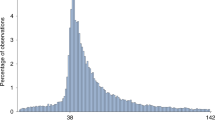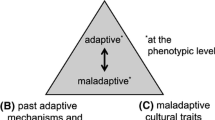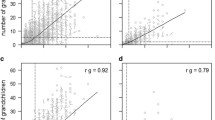Abstract
Common human reproductive inefficiencies have multiple etiologies. Going against chance, many effects, such as polycystic ovaries, endometriosis, and folate metabolic issues, have genetic components, while aneuploid losses arise from diverse mitotic and meiotic errors at different stages, some transitory. This can be advantageous, since greater overall survival with fewer offspring can increase reproductive success. Benefits primarily accrue to mothers, who bear most child related costs, and for whom early losses are less costly than late. Different adaptations to different situations reflect human evolutionary history. For early speciation, periodic climate extremes repeatedly reduced resources, favoring limitations while contracted populations helped fix relevant genes. Later, under better conditions, evolving social cooperation could increase fecundity faster than it added resources, further supporting reproductive suppression through mitotic aneuploidy, with very early losses minimizing maternal costs. The grandmother hypothesis suggests benefits in limiting reproduction as maternal age increased pregnancy risks in order to support grandchildren as they arrived, selecting for maternal age-related meiotic aneuploidy. Finally, with variable short-term agricultural shortages, acute reproductive responses arose through chromatin “nutrient sensor”-regulated epigenetic effects that also shifted some lethal effects earlier, reducing both maternal and mutation load costs. Overall, despite suggestions to the contrary, it is likely that human selective pressures have not decreased with civilization, but that many of the costs have been shifted to early reproduction.
Similar content being viewed by others
References
Jarvis GE. 2016. Estimating limits for natural human embryo mortality [version 1. F1000Research 2016, 5:2083 Last updated: 30 AUG 2016.
Day FR, Hinds DA, Tung JY, Stolk L, Styrkarsdottir U, Saxena R, et al. Causal mechanisms and balancing selection inferred from genetic associations with polycystic ovary syndrome. Nat Commun. 2015;6:8464.
Low BS. Fertility. Life history and ecological aspects. In: Fisher M, Garcia JR, Chang RS, editors. Evolution’s empress: Darwinian perspectives on the nature of women. NY: Oxford University Press; 2013. p. 222–42.
Lubinsky M. An epigenetic association of malformations, adverse reproductive outcomes, and fetal origins hypothesis related effects. J Assist Reprod Genet. 2018;35:953–64. https://doi.org/10.1007/s10815-018-1197-2.
Muller HJ. Our load of mutations. Am J Hum Genet. 1950;2:111–76.
Knudson AG Jr. Presidential address. Our load of mutations and its burden of disease. Am J Hum Genet. 1979;31:401–13.
Albertini DF. Explaining the futility of the reproductive process in humans: past, present, and future. J Assist Reprod Genet. 2017;34:157–8.
Stevens VC. Some reproductive studies in the baboon. Hum Reprod Update. 1997;3:533–40.
Zinaman MJ, Clegg ED, Brown CC, O’Connor J, Selevan SG. Estimates of human fertility and pregnancy loss. Fertil Steril. 1996;65:503–9.
Wang X, Chen C, Wang L, Chen D, Guang W, French J. Conception, early pregnancy loss, and time to clinical pregnancy: a population-based prospective study. Fertil Steril. 2003;79:577–84.
Saha R, Pettersson HJ, Svedberg P, Olovsson M, Bergqvist A, Marions L, et al. Heritability of endometriosis. Fertil Steril. 2015;104:947–52.
Barthelmess EK, Naz RK. Polycystic ovary syndrome: current status and future perspective. Front Biosci (Elite Ed). 2014;6:104–19.
McCoy RC, Demko Z, Ryan A, Banjevic M, Hill M, Sigurjonsson S, et al. Common variants spanning PLK4 are associated with mitotic-origin aneuploidy in human embryos. Science. 2015;348:235–8.
Cao Y, Zhang Z, Zheng Y, Yuan W, Wang J, Liang H, et al. The association of idiopathic recurrent early pregnancy loss with polymorphisms in folic acid metabolism-related genes. Genes Nutr. 2014;9:1–8.
McCoy RC. Mosaicism in preimplantation human embryos: when chromosomal abnormalities are the norm. Trends Genet. 2017;33:448–63.
Webster A, Schuh M. Mechanisms of aneuploidy in human eggs. Trends Cell Biol. 2017;27:55–68.
Jacobson MH, Chin HB, Mertens AC, Spencer JB, Fothergill A, Howards PP. “Research on infertility: definition makes a difference” revisited. Am J Epidemiol. 2017;187:337–46.
Bulletti C, Coccia ME, Battistoni S, Borini A. Endometriosis and infertility. J Assist Reprod Genet. 2010;27:441–7.
Treloar SA, O’Connor DT, O'Connor VM, Martin NG. Genetic influences on endometriosis in an Australian twin sample. Fertil Steril. 1999;71:701–10.
Rahmioglu N, Nyholt DR, Morris AP, Missmer SA, Montgomery GW, Zondervan KT. Genetic variants underlying risk of endometriosis: insights from meta-analysis of eight genome-wide association and replication datasets. Hum Reprod Update. 2014;20:702–16.
Shi X, Xie X, Jia Y, Li S. Maternal genetic polymorphisms and unexplained recurrent miscarriage: a systematic review and meta-analysis. Clin Genet. 2017;91:265–84.
Enciso M, Sarasa J, Xanthopoulou L, Bristow S, Bowles M, Fragouli E, et al. Polymorphisms in the MTHFR gene influence embryo viability and the incidence of aneuploidy. Hum Genet. 2016;135:555–68.
Wu H, Zhu P, Geng X, Liu Z, Cui L, Gao Z, et al. Genetic polymorphism of MTHFR C677T with preterm birth and low birth weight susceptibility: a meta-analysis. Arch Gynecol Obstet. 2017;295:1105–8.
Zhang G, Feenstra B, Bacelis J, Liu X, Muglia LM, Juodakis J, et al. Genetic associations with gestational duration and spontaneous preterm birth. N Engl J Med. 2017;377:1156–67.
Moore GE, Ishida M, Demetriou C, Al-Olabi L, Leon LJ, Thomas AC, et al. The role and interaction of imprinted genes in human fetal growth. Philos Trans R Soc Lond B. 2015;370:20140074.
Beaumont RN, Warrington NM, Cavadino A, Tyrrell J, Nodzenski M, Horikoshi M, et al. Genome-wide association study of offspring birth weight in 86,577 women identifies five novel loci and highlights maternal genetic effects that are independent of fetal genetics. Hum Mol Genet. 2018;27(4):742–56.
Delhanty JD, Harper JC, Ao A, Handyside AH, Winston RM. Multicolour FISH detects frequent chromosomal mosaicism and chaotic division in normal preimplantation embryos from fertile patients. Hum Genet. 1997;99:755–60.
Coulam C. What about superfertility, decidualization, and natural selection? J Assist Reprod Genet. 2016;33:577–80.
Munné S, Wells D. Detection of mosaicism at blastocyst stage with the use of high-resolution next-generation sequencing. Fertil Steril. 2017;107:1085–91.
Basso O. Reproductive epidemiology in an evolutionary perspective: why bigger may not be better. Curr Epidemiol Rep. 2014;1:98–101.
Zaragoza MV, Surti U, Redline RW, Millie E, Chakravarti A, Hassold TJ. Parental origin and phenotype of triploidy in spontaneous abortions: predominance of diandry and association with the partial hydatidiform mole. Am J Hum Genet. 2000;66:1807–20.
Zhong Q, Layman LC. Genetic considerations in the patient with Turner syndrome—45, X with or without mosaicism. Fertil Steril. 2012;98:775–9.
Salas-Huetos A, Bulló M, Salas-Salvadó J. Dietary patterns, foods and nutrients in male fertility parameters and fecundability: a systematic review of observational studies. Hum Reprod Update. 2017;23:371–89.
Hong HH, Hu Y, Yu XQ, Zhou L, Lv MQ, Sun Y, et al. Associations of C677T polymorphism in methylenetetrahydrofolate reductase (MTHFR) gene with male infertility risk: a meta-analysis. Eur J Obstet Gynecol Reprod Biol. 2017;212:101–9.
Malthus TR. An essay on the principle of population or a view of its past and present effects on human happiness; with an inquiry into our prospects respecting the future removal or mitigation of the evils which it occasions. 6th ed. London: John Murray; 1826.
van den Berg MM, van Maarle MC, van Wely M, Goddijn M. Genetics of early miscarriage. Biochim Biophys Acta. 1822;2012:1951–9.
Maslin MA, Shultz S, Trauth MH. A synthesis of the theories and concepts of early human evolution. Philos Trans Roy Soc Lond B: Biol Sci. 2015;370:20140064.
Stulp G, Barrett L. Fertility theory: theory of life history evolution. In: Wright J, editor. The International Encyclopedia of the Social and Behavioral Sciences. 2nd ed: Elsevier; 2015.
Koenig MA, Phillips JF, Campbell OM, D'Souza S. Birth intervals and childhood mortality in rural Bangladesh. Demography. 1990;27:251–65.
Waxman D. A unified treatment of the probability of fixation when population size and the strength of selection change over time. Genetics. 2011;188:907–13.
Burkart JM, Hrdy SB, Van Schaik CP. Cooperative breeding and human cognitive evolution. Evol Anthropol. 2009;18:175–86.
Bogin B, Bragg J, Kuzawa C. Humans are not cooperative breeders but practice biocultural reproduction. Ann Hum Biol. 2014;41:368–80.
Trevathan W. Primate pelvic anatomy and implications for birth. Philos Trans R Soc B. 2015;370:20140065.
Donate A, Estop AM, Giraldo J, Templado C. Paternal age and numerical chromosome abnormalities in human spermatozoa. Cytogenet Genome Res. 2016;148:241–8.
Shanley DP, Kirkwood TB. Evolution of the human menopause. BioEssays. 2001;23:282–7.
Alberts SC, Altmann J, Brockman DK, Cords M, Fedigan LM, Pusey A, et al. Reproductive aging patterns in primates reveal that humans are distinct. Proc Natl Acad Sci. 2013;110(33):13440–5.
Hawkes K. Genomic evidence for the evolution of human postmenopausal longevity. Proc Natl Acad Sci. 2016;113:17–8.
Hassold T, Hunt P. To err (meiotically) is human: the genesis of human aneuploidy. Nat Rev Genet. 2001;2:280–91.
Holopainen J, Helama S. Little ice age farming in Finland: preindustrial agriculture on the edge of the Grim Reaper’s scythe. Hum Ecol. 2009;37:213–25.
Navarro E, Funtikova AN, Fíto M, Schröder H. Prenatal nutrition and the risk of adult obesity: long-term effects of nutrition on epigenetic mechanisms regulating gene expression. J Nutr Biochem. 2017;39:1–4.
Laanpere M, Altmäe S, Stavreus-Evers A, Nilsson TK, Yngve A, Salumets A. Folate-mediated one-carbon metabolism and its effect on female fertility and pregnancy viability. Nutr Rev. 2010;68:99–113.
Parisi F, Rousian M, Koning AH, Willemsen SP, Cetin I, Steegers EA, et al. Periconceptional maternal biomarkers of one-carbon metabolism and embryonic growth trajectories: the Rotterdam Periconceptional Cohort (Predict Study). Fertil Steril. 2017;107:691–8. e1
Parisi F, Rousian M, Koning AH, Willemsen SP, Cetin I, Steegers-Theunissen RP. Periconceptional maternal one-carbon biomarkers are associated with embryonic development according to the Carnegie stages. Hum Reprod. 2017; https://doi.org/10.1093/humrep/dew349.
Hodgetts VA, Morris RK, Francis A, Gardosi J, Ismail KM. Effectiveness of folic acid supplementation in pregnancy on reducing the risk of small-for-gestational age neonates: a population study, systematic review, and meta-analysis. BJOG. 2015;122:478–90.
Zheng JS, Guan Y, Zhao Y, Zhao W, Tang X, Chen H, et al. Pre-conceptional intake of folic acid supplements is inversely associated with risk of preterm birth and small-for-gestational-age birth: a prospective cohort study. Br J Nutr. 2016;115:509–16.
De-Regil LM, Fernández-Gaxiola AC, Dowswell T, Peña-Rosas JP. Effects and safety of periconceptional folate supplementation for preventing birth defects. Cochrane Libr. 2010;
Cueto HT, Riis AH, Hatch EE, Wise LA, Rothman KJ, Sørensen HT, et al. Folic acid supplementation and fecundability: a Danish prospective cohort study. Eur J Clin Nutr. 2016;70:66–71.
Abu-Saad K, Fraser D. Maternal nutrition and birth outcomes. Epidemiol Rev. 2010;32:5–25.
Gaskins AJ, Rich-Edwards JW, Hauser R, Williams PL, Gillman MW, Ginsburg ES, et al. Maternal prepregnancy folate intake and risk of spontaneous abortion and stillbirth. Obstet Gynecol. 2014;124:23–31.
Rogne T, Tielemans MJ, Chong MF, Yajnik CS, Krishnaveni GV, Poston L, et al. Maternal vitamin B12 in pregnancy and risk of preterm birth and low birth weight: a systematic review and individual participant data meta-analysis. Am J Epidemiol. 2017;185:212–23.
Stein Z, Susser M. Fertility, fecundity, famine: food rations in the Dutch famine 1944/5 have a causal relation to fertility, and probably to fecundity. Hum Biol. 1975;47:131–54.
Moore SE. Early life nutritional programming of health and disease in The Gambia. J Dev Orig Health Dis. 2016;7:123–31.
Suresh RV, Udupa AS, Lingaiah K, Polapalli SK, Ramachandra NB. Association of RFC1 A80G gene polymorphism with advanced maternal age in risk of Down syndrome. Curr Med Res Practice. 2017;7:6–10.
Waterland RA. Epigenetic mechanisms affecting regulation of energy balance: many questions, few answers. Annu Rev Nutr. 2014;34:337–55.
Siegal ML, Bergman A. Waddington’s canalization revisited: developmental stability and evolution. Proc Natl Acad Sci. 2002;99:10528–32.
Yeyati PL, van Heyningen V. Incapacitating the evolutionary capacitor: Hsp90 modulation of disease. Curr Opin Genet Dev. 2008;18:264–72.
Author information
Authors and Affiliations
Rights and permissions
About this article
Cite this article
Lubinsky, M. Evolutionary justifications for human reproductive limitations. J Assist Reprod Genet 35, 2133–2139 (2018). https://doi.org/10.1007/s10815-018-1285-3
Received:
Accepted:
Published:
Issue Date:
DOI: https://doi.org/10.1007/s10815-018-1285-3




